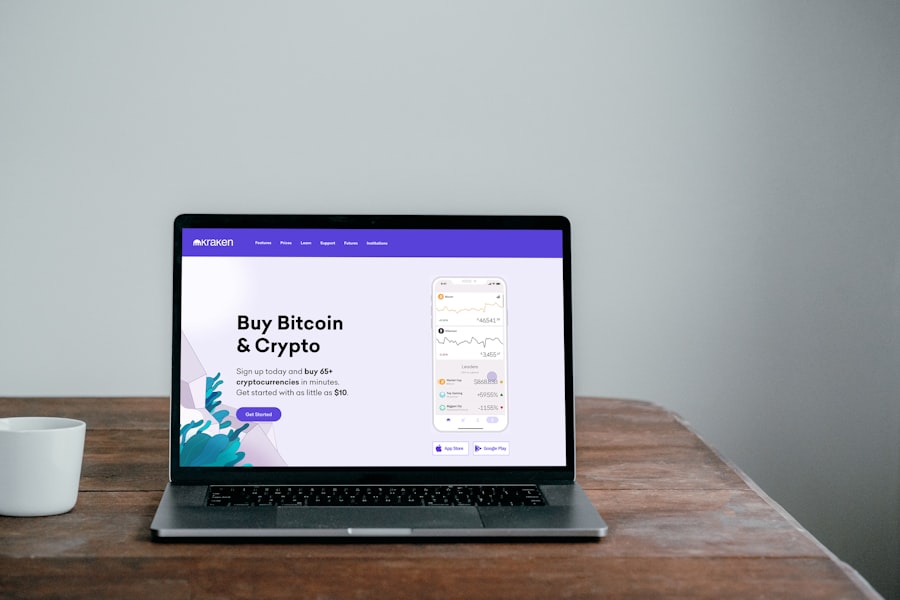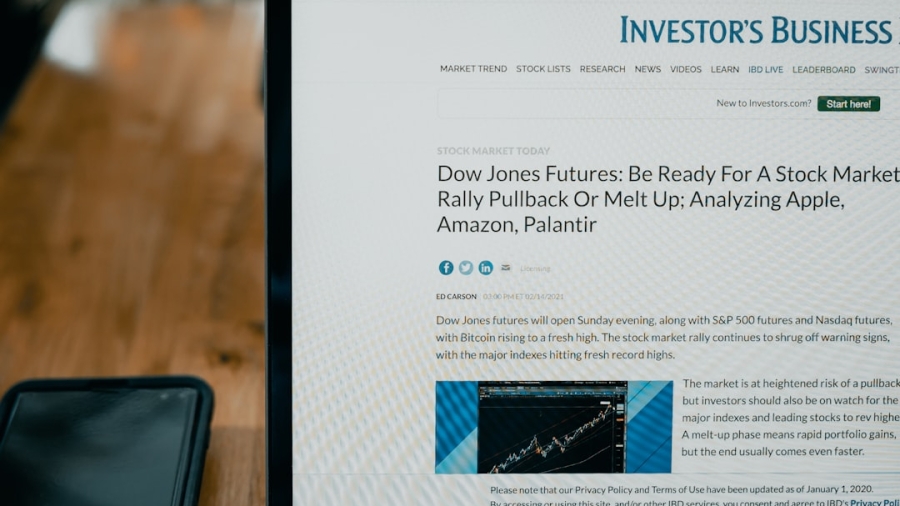The evolution of the internet has been characterized by a significant contrast between centralized and decentralized models, each presenting unique advantages and challenges. Centralized internet structures are defined by a small number of dominant entities controlling large portions of data and services. This model has enabled rapid growth and innovation, allowing companies to optimize operations and efficiently deliver services.
However, this concentration of power raises issues concerning monopolistic practices, data privacy, and potential censorship. In contrast, the decentralized internet aims to distribute control across a wider network of users, fostering a more democratic approach to data ownership and access. This model utilizes blockchain technology and peer-to-peer networks to create an environment where individuals maintain greater control over their information and online interactions.
The implications of these two paradigms extend beyond technical considerations, encompassing a philosophical debate about control, freedom, and trust in the digital age. The centralized model, while efficient, often results in a lack of transparency and accountability, as users entrust their data to corporations that may prioritize profit over user welfare. Conversely, the decentralized approach promotes user autonomy and resilience against systemic failures but faces challenges related to usability and governance.
Understanding these dynamics is essential as we navigate the complexities of our increasingly digital lives and consider the future direction of the internet.
Key Takeaways
- Centralized internet is controlled by a single entity, while decentralized internet is distributed across multiple nodes.
- Control and ownership of data is concentrated in centralized internet, while decentralized internet allows for more user control and ownership of data.
- Security and privacy are major concerns in centralized internet due to the risk of data breaches, while decentralized internet offers more security and privacy through its distributed nature.
- Access to information can be restricted in centralized internet through censorship, while decentralized internet allows for more freedom of access.
- Centralized internet may struggle with efficiency and scalability as it grows, while decentralized internet can offer more efficient and scalable solutions through its distributed nature.
- Innovation and flexibility are more limited in centralized internet, while decentralized internet allows for more innovation and flexibility in its structure and applications.
- The future of internet may involve a combination of centralized and decentralized elements, with a focus on balancing control, security, access, efficiency, and innovation.
Control and Ownership of Data
At the heart of the debate between centralized and decentralized internet lies the issue of data control and ownership. In a centralized framework, data is typically stored on servers owned by large corporations, which not only manage the infrastructure but also dictate how user data is collected, used, and shared. This concentration of data ownership raises significant ethical questions about consent and privacy.
Users often find themselves at the mercy of opaque terms of service agreements that grant companies extensive rights over their personal information. The implications are profound: individuals may unwittingly surrender their privacy in exchange for free services, while corporations leverage this data for targeted advertising and other profit-driven endeavors. In contrast, the decentralized internet seeks to empower users by enabling them to retain ownership of their data.
Through technologies such as blockchain, individuals can store their information in a distributed manner, ensuring that no single entity has unilateral control over it. This shift not only enhances privacy but also fosters a sense of agency among users, allowing them to decide how their data is shared and utilized. However, this model is not without its challenges; the responsibility for data management shifts to individuals, who may lack the technical expertise or resources to navigate complex systems effectively.
As we explore the implications of data ownership in both models, it becomes clear that achieving a balance between user empowerment and practical usability is essential for fostering a healthier digital ecosystem.
Security and Privacy

Security and privacy are paramount concerns in today’s digital landscape, where cyber threats are increasingly sophisticated and pervasive. In a centralized internet model, security measures are often concentrated within the infrastructure of a few major players. While these companies invest heavily in cybersecurity protocols to protect user data from breaches, they also become attractive targets for hackers due to the vast amounts of information they hold.
A single successful attack can compromise millions of accounts, leading to significant financial losses and erosion of user trust. Moreover, centralized systems can be vulnerable to internal threats, where employees or insiders may exploit their access for malicious purposes. On the other hand, the decentralized internet offers a different approach to security and privacy.
By distributing data across a network of nodes rather than storing it in a single location, decentralized systems can reduce the risk of large-scale breaches. Each participant in the network holds a portion of the data, making it more challenging for malicious actors to access comprehensive information sets. Additionally, decentralized technologies often incorporate encryption methods that enhance user privacy by ensuring that only authorized parties can access sensitive information.
However, this model is not immune to its own vulnerabilities; decentralized networks can face challenges related to coordination and consensus among participants, which may hinder their ability to respond swiftly to emerging threats. As we weigh the security implications of both models, it becomes evident that neither is inherently superior; rather, each presents unique risks and benefits that must be carefully considered.
Access and Censorship
Access to information is a fundamental tenet of a free society, yet it remains a contentious issue in discussions about centralized versus decentralized internet models. Centralized platforms often wield significant power over what content is accessible to users. This control can manifest in various forms, from algorithmic bias that prioritizes certain viewpoints to outright censorship of dissenting opinions.
The consequences can be dire; when a handful of corporations dictate what information is available online, they inadvertently shape public discourse and influence societal norms. This concentration of power raises critical questions about freedom of expression and the role of technology companies in safeguarding or undermining democratic values. In contrast, proponents of a decentralized internet argue that distributing control among users can mitigate censorship risks.
By enabling peer-to-peer sharing and fostering open-source platforms, decentralized systems can create environments where diverse voices are heard without fear of suppression. This democratization of access empowers individuals to share information freely and engage in meaningful dialogue without interference from gatekeepers. However, this model also presents challenges; without centralized oversight, there is a risk that harmful content could proliferate unchecked, leading to misinformation or extremist ideologies gaining traction.
Striking a balance between protecting free speech and ensuring responsible content dissemination remains a complex challenge as we navigate the evolving landscape of digital communication.
Efficiency and Scalability
Efficiency and scalability are critical factors that influence the viability of both centralized and decentralized internet models. Centralized systems excel in terms of operational efficiency due to their streamlined architecture. With a single entity managing resources and infrastructure, these platforms can quickly implement updates, optimize performance, and deliver services with minimal latency.
This efficiency has been instrumental in driving innovations such as cloud computing and real-time data processing, enabling businesses to scale rapidly while maintaining high levels of service quality. Conversely, decentralized networks face inherent challenges related to scalability as they rely on distributed nodes for data storage and processing. While this model promotes resilience and redundancy, it can also lead to slower transaction speeds and increased complexity in managing network resources.
As more users join a decentralized platform, maintaining performance levels becomes increasingly difficult without sophisticated algorithms for load balancing and resource allocation. Nevertheless, advancements in technology are paving the way for improved scalability solutions within decentralized frameworks. Innovations such as sharding and layer-two protocols aim to enhance transaction throughput while preserving the core principles of decentralization.
As we consider the future of internet architecture, understanding how these models can evolve to meet growing demands will be crucial for fostering sustainable growth.
Innovation and Flexibility

Innovation is often heralded as one of the most significant benefits of both centralized and decentralized internet models; however, the pathways through which innovation occurs differ markedly between them. Centralized platforms tend to foster rapid innovation through concentrated resources and talent pools. By centralizing decision-making processes within corporate structures, these entities can pivot quickly in response to market demands or technological advancements.
This agility has led to groundbreaking developments in areas such as artificial intelligence, machine learning, and big data analytics—transformations that have reshaped industries across the globe. On the other hand, decentralized systems promote innovation through collaboration and community-driven initiatives. By removing barriers to entry for developers and users alike, these platforms encourage experimentation and creativity at all levels.
Open-source projects thrive in decentralized environments where contributors from diverse backgrounds can collaborate on solutions without corporate constraints. This flexibility allows for rapid prototyping and iteration, leading to novel applications that may not have emerged within traditional corporate frameworks. However, fostering innovation in decentralized networks requires effective governance structures to ensure that contributions are recognized and rewarded fairly—a challenge that necessitates ongoing dialogue among stakeholders as these ecosystems evolve.
Future of Centralized and Decentralized Internet
As we look toward the future of the internet, it is clear that both centralized and decentralized models will continue to coexist, each serving distinct purposes within our digital landscape. The centralized internet will likely remain dominant in sectors where efficiency and speed are paramount—such as e-commerce or streaming services—where user experience hinges on seamless interactions facilitated by powerful infrastructure. However, growing concerns about privacy violations, data breaches, and monopolistic practices may drive users toward alternative solutions that prioritize transparency and user control.
Conversely, the decentralized internet holds promise as an alternative for those seeking greater autonomy over their digital lives. As awareness around issues like data ownership and censorship increases among users, demand for decentralized solutions may rise correspondingly. The ongoing development of blockchain technology and peer-to-peer networks suggests that we are on the cusp of significant advancements that could reshape how we interact online.
Ultimately, the future will likely involve a hybrid approach where elements from both models are integrated to create a more equitable digital ecosystem—one that balances efficiency with user empowerment while fostering innovation across diverse sectors. As we navigate this complex landscape, ongoing dialogue among technologists, policymakers, and users will be essential in shaping an internet that reflects our collective values and aspirations for a more connected world.
If you’re interested in understanding the nuances of emerging technologies, particularly in the context of internet infrastructure, you might find the article on how emerging technologies are shaping our digital landscape quite enlightening. This piece explores various technological advancements and their implications for both centralized and decentralized internet frameworks. It provides a comprehensive look at how these technologies are being integrated into our daily lives and the potential they hold for future internet structures.
FAQs
What is a centralized internet?
A centralized internet refers to a network architecture where control and decision-making are concentrated in a single entity or a small group of entities. This can include centralized servers, databases, and infrastructure.
What is a decentralized internet?
A decentralized internet refers to a network architecture where control and decision-making are distributed across a large number of entities. This can include peer-to-peer networks, blockchain technology, and distributed storage systems.
What are the key differences between centralized and decentralized internet?
The key differences between centralized and decentralized internet include control and decision-making, resilience to censorship and attacks, data privacy and security, and the potential for innovation and competition.
How does a centralized internet affect data privacy and security?
In a centralized internet, data is often stored in a few locations, making it more vulnerable to security breaches and unauthorized access. This can pose risks to data privacy and security.
How does a decentralized internet affect data privacy and security?
In a decentralized internet, data is distributed across multiple nodes, making it more resilient to security breaches and unauthorized access. This can enhance data privacy and security.
What are some examples of centralized internet services?
Examples of centralized internet services include social media platforms, cloud storage providers, and centralized payment systems.
What are some examples of decentralized internet technologies?
Examples of decentralized internet technologies include blockchain, peer-to-peer file sharing networks, and decentralized storage systems.
What are the potential benefits of a decentralized internet?
Potential benefits of a decentralized internet include increased resilience to censorship and attacks, enhanced data privacy and security, and the potential for greater innovation and competition in the digital space.

